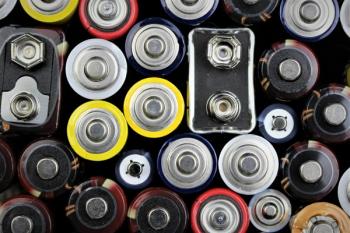
A Closer Look at Biosensors: A Practical Tutorial for Spectroscopists
Key Takeaways
- Biosensors combine biological recognition elements with transducers to convert biochemical events into measurable signals, enhancing precision in diagnostics and monitoring.
- Advances in microfabrication and nanomaterials have significantly improved biosensor sensitivity, specificity, and portability, expanding their applications in various fields.
This tutorial introduces spectroscopy professionals to the operational principles, practical workflows, and laboratory applications of biosensors. It covers core definitions, biosensor types, transduction methods, nanomaterials-enabled strategies, and optical/electrochemical approaches relevant to spectroscopic analysis. Readers will learn how biosensors integrate biological recognition with physicochemical detection, how to implement them in real-world measurement tasks, and how to avoid common technical pitfalls when translating biosensor theory into laboratory practice.
Introduction and Relevance
Biosensors have become indispensable tools across modern spectroscopy, providing routes to selective quantification of biomolecules, pathogens, metabolites, and living cell responses. Their relevance has intensified with the need for decentralized diagnostics, rapid analyses, and real-time monitoring in biotechnology, medicine, food quality control, environmental surveillance, and bioprocess engineering. Unlike conventional chemical sensors, biosensors incorporate a biological recognition element, such as an enzyme, antibody, nucleic acid, or whole cell, directly into a transduction system that converts biochemical events into measurable electrical, optical, electrochemical, or mechanical signals (1–3). The combination of biological specificity with spectroscopic or spectroscopically compatible transducers enables analytical capabilities that support precision medicine, high-throughput screening, and wearable or field-deployable monitoring devices.
The past two decades have seen the rapid maturation of biosensor technology, driven both by advances in microfabrication, microelectromechanical systems (MEMS), and next-generation, smaller, faster, more sensitive (NEMS), and nanomaterials, and by increasingly sophisticated spectroscopic interrogation methods (3,4). For spectroscopists, a working knowledge of biosensors expands the laboratory toolkit, enabling measurements that are otherwise inaccessible with traditional laboratory or handheld spectroscopic techniques alone. This tutorial, therefore, focuses on the principles and practicalities of biosensor operation, offering a clear pathway to integrating biosensors into routine spectroscopic workflows.
Core Tutorial Content
Principles and Definitions
A biosensor is classically defined as an analytical device integrating a biological recognition element with a physicochemical transducer that converts a biological event into a measurable signal (2,3). This definition, originating from early work by Cammann and later formalized by International Union of Pure and Applied Chemistry (IUPAC), captures the essence of how biosensors function but leaves room for a wide variety of device architectures (2).
A typical biosensor is comprised of:
- Biorecognition Element
Enzymes, antibodies, nucleic acids (DNA/RNA), aptamers, receptors, cells, or tissues that provide analyte specificity. - Transducer
Electrochemical, optical, gravimetric, thermal, magnetic, or micromechanical elements that convert biochemical events from the biorecognition element into signals (1,4,5). - Signal Processing System
Electronics, software, and calibration models for converting raw signals into analytical outputs, often compatible with spectroscopy.
Sensitivity and specificity are the hallmarks of biosensors; however, stability, reproducibility, and tolerance to temperature or pH variations are equally important in daily laboratory practice (2). As Turner (4) emphasizes, biosensors fall broadly into high-throughput laboratory instruments and portable point-of-care devices, both sharing foundational principles but differing significantly in implementation.
Types of Biosensors
Biosensors can be classified according to their biological recognition element or transduction modality.
Classification by Biorecognition Element
- Enzyme-based sensors: The earliest and still the most widely commercialized; glucose oxidase electrodes remain the flagship example (4,6).
- Immunosensors: Use antibody–antigen recognition; highly relevant for pathogen detection and clinical diagnostics (2,7).
- DNA and aptamer biosensors: Enable detection of nucleic acids, mutations, single-nucleotide polymorphism (SNPs), and specific nucleotide or amino acid sequences (3,7).
- Whole-cell or tissue-based sensors: Provide complex responses useful for toxin detection, drug screening, or metabolic profiling.
Classification by Transducer
- Electrochemical: Includes amperometric, potentiometric, conductometric, and impedimetric sensors; dominant in clinical diagnostics due to simplicity and sensitivity (5–7).
- Optical: Based on absorbance, fluorescence, luminescence, refractive index, or reflectance changes; favored in research and high-resolution systems (4,8).
- Piezoelectric/acoustic: Track mass changes on surfaces (1,5).
- Thermal: Detect heat exchange from biochemical reactions.
- Mechanical/MEMS: Transduce forces, deflections, or resonance frequency shifts (1).
Each category offers distinct advantages: optical biosensors provide superior multiplexing, while electrochemical biosensors excel in high portability and low power requirements.
How Biosensors Work in Practice
In operational terms, biosensors detect analytes through recognition, transduction, and signal interpretation.
1. Recognition Mechanism
The biorecognition element interacts specifically with the analyte (substrate binding, antigen–antibody complex formation, hybridization, enzymatic turnover). The quality of this interaction determines sensor specificity. Immobilization methods: adsorption, covalent attachment, entrapment, or affinity-based anchoring, must maintain biological activity while ensuring stability (2).
2. Transduction
Signal transduction converts the recognition event into measurable spectroscopy-compatible output:
- Electrochemical Transduction
Electron transfer events alter current, potential, or impedance. - oImpedimetric biosensors measure frequency-dependent resistance changes due to biomolecular binding at modified electrodes (7).
- oAmperometric sensors quantify enzymatic conversion rates.
- Optical Transduction
Optical biosensors detect changes in absorbance, fluorescence, lifetime, anisotropy, quenching, and surface plasmon resonance (SPR) response, or luminescence energy transfer (8).
Fluorescent biosensors enable single-molecule sensitivity and real-time monitoring, essential for cell-based assays and drug discovery (2,9). - Mechanical Transduction
MEMS/NEMS sensors measure shifts in resonance frequency when mass binds to microcantilevers or membranes (1).
3. Signal Processing and Calibration
Signal processing includes baseline correction, noise reduction, drift compensation, and various calibration models (curves). Multivariate calibration methods: PCA, PLS, or regression models are particularly useful in optical biosensing, where spectra require complex preprocessing and signal interpretation. Spectroscopists are already familiar with such tools, making biosensor data integration straightforward.
Application and Method Examples
Biosensors serve an extremely broad application space; below are practical examples relevant to spectroscopists.
1. Medical and Clinical Diagnostics
Electrochemical glucose biosensors remain the dominant commercial example, forming a multibillion-dollar industry (6). Newer biosensors detect cardiac biomarkers, cytokines, pathogens such as human papillomavirus (HPV), and disease-related nucleic acids (2,9).
Spectroscopy labs may use:
- Fluorescent biosensors for tracking cellular responses to drugs (9).
- Impedimetric immunosensors for antibody-based pathogen detection (7).
- Label-free optical biosensors for real-time monitoring of binding kinetics.
- Peptide SPR biosensors with specific analyte detection.
2. Environmental Monitoring
Optical biosensors detect contaminants, pesticides, heavy metals, or waterborne pathogens. Fluorescent probes can quantify oxygen, pH, or metals using optical fibers or planar foils (8). Spectroscopists benefit from the ability to integrate fluorometric detection into field systems.
3. Food and Agriculture
Biosensors detect spoilage organisms, glucose or lactate levels in fermentation, adulterants, and allergens. Enzyme-based sensors monitor process parameters without extensive sample preprocessing (2).
4. Biotechnology and Bioprocessing
Real-time metabolic sensing inside bioreactors—using enzyme or whole-cell biosensors—supports process optimization. Fluorescent biosensors allow in situ intracellular monitoring (2,8).
5. Security and Defense
Rapid immunosensors detect toxins or biological threat agents. Miniaturized electrochemical devices enable portable field diagnostics (4,6).
Tips and Common Pitfalls in Using Biosensors
1. Immobilization Challenges
Biomolecules may denature, lose specificity, or become inaccessible. Use surface chemistries tailored to the biomolecule (for example, SAMs for proteins, silane layers for nucleic acids).
2. Calibration and Drift
Biological components degrade over time, affecting calibration curves. Recalibration, reference standards, and storage control are essential.
3. Matrix Interference
Complex samples (serum, wastewater, plant extracts) introduce nonspecific binding and fouling. Use blocking agents, antifouling coatings, or prefiltration.
4. Temperature and pH Effects
Biological elements are often sensitive to environmental conditions. Employ temperature correction algorithms or enzyme mutants for robustness.
5. Overinterpreting Precision
As Kissinger cautions (6), excessive significant figures mask the real variability inherent to biological systems. Report meaningful uncertainty.
6. Nanomaterials Handling
Nanostructured electrodes or optical elements improve sensitivity but require rigorous characterization to ensure reproducibility (3).
Figures and Diagrams (Descriptions)
Below are suggested conceptual figures to accompany the article:
- Figure 1: Basic Biosensor Architecture
A block diagram showing the biorecognition layer, transducer, and signal processing unit with spectroscopic interfaces. - Figure 2: Optical Biosensing Schematics
Illustrations of fluorescence, absorption, lifetime, and quenching detection modes, showing excitation/emission pathways. - Figure 3: Impedimetric Nyquist Plot
Graph of a semicircle and Warburg region illustrating changes in charge-transfer resistance (Rct) upon analyte binding (7). - Figure 4: Nanomaterial-Enhanced Biosensor Surface
Diagram comparing a flat electrode vs. a nanostructured electrode with increased effective surface area. - Figure 5: Application Workflow
Step-by-step flowchart for deploying a biosensor in a spectroscopy lab—from sample prep to calibration to analysis.
Conclusion and Practical Takeaways
Biosensors bring together biological specificity and spectroscopic or physicochemical transduction mechanisms to create powerful analytical instruments suitable for both laboratory and field environments. Their versatility, from optical biosensors that enable real-time kinetic monitoring to electrochemical devices that deliver rapid point-of-care diagnostics, continues to expand as nanomaterials, microfabrication, and imaging technologies evolve (3,4). For spectroscopists, biosensors offer complementary capabilities—especially for analyzing complex biological matrices or monitoring dynamic biochemical processes that traditional spectroscopy cannot isolate on its own (10).
Integrating biosensors into laboratory workflows involves understanding biorecognition chemistry, choosing appropriate transduction methods, and applying robust calibration and signal-processing techniques. Practical challenges—such as biological stability, matrix effects, and sensor drift—can be managed through careful design, proper calibration, and awareness of limitations. With the increasing emphasis on personalized medicine, environmental sustainability, and real-time monitoring, biosensors will remain a highly relevant and expanding toolset. By mastering their principles and applications, spectroscopists can enhance analytical throughput, expand measurement capabilities, and participate in the exciting convergence of biology, chemistry, and spectroscopy.
References
(1) Mohanty, S. P.; Kougianos, E. Biosensors: A Tutorial Review. IEEE Potentials 2006, 25 (2), 35–40. DOI
(2) Mehrotra, P. Biosensors and Their Applications—A Review. J. Oral Biol. Craniofac. Res. 2016, 6 (2), 153–159. DOI:
(3) Naresh, V.; Lee, N. A Review on Biosensors and Recent Development of Nanostructured Materials-Enabled Biosensors. Sensors 2021, 21 (4), 1109. DOI:
(4) Turner, A. P. Biosensors: Sense and Sensibility. Chem. Soc. Rev. 2013, 42 (8), 3184–3196. DOI:
(5) Lowe, C. R. Biosensors. Trends Biotechnol. 1984, 2 (3), 59–65. DOI:
(6) Kissinger, P. T. Biosensors—A Perspective. Biosens. Bioelectron. 2005, 20 (12), 2512–2516. DOI:
(7) Bahadır, E. B.; Sezgintürk, M. K. A Review on Impedimetric Biosensors. Artif. Cells Nanomed. Biotechnol. 2016, 44 (1), 248–262. DOI:
(8) Borisov, S. M.; Wolfbeis, O. S. Optical Biosensors. Chem. Rev. 2008, 108 (2), 423–461. DOI:
(9) Haleem, A.; Javaid, M.; Singh, R. P.; Suman, R.; Rab, S. Biosensors Applications in Medical Field: A Brief Review. Sensors Int. 2021, 2, 100100. DOI:
(10) Chadha, U.; Bhardwaj, P.; Agarwal, R.; Rawat, P.; Agarwal, R.; Gupta, I.; Panjwani, M.; Singh, S.; Ahuja, C.; Selvaraj, S. K.; Banavoth, M. Recent Progress and Growth in Biosensors Technology: A Critical Review. J. Ind. Eng. Chem. 2022, 109, 21–51. DOI:
Newsletter
Get essential updates on the latest spectroscopy technologies, regulatory standards, and best practices—subscribe today to Spectroscopy.





